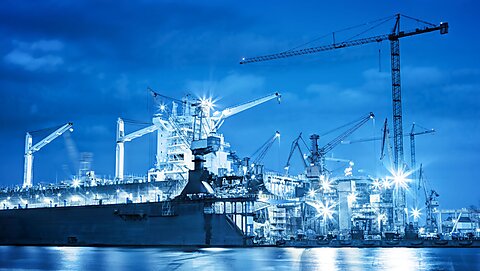While it’s no secret that vessels built in US shipyards to comply with the protectionist Jones Act are far costlier than those constructed overseas, some recent numbers provided by an industry insider are nonetheless stunning. Last fall, the CEO of Overseas Shipholding Group, a company that operates Jones Act-compliant tankers, estimated that the price of a US-built product tanker currently approaches $250 million. A few weeks later, he amended that figure to $200-$250 million.
Either way, it’s extraordinary.
To understand why, consider that the price of such vessels built overseas is somewhere between $45 million and $52 million. Further consider that the $200 million figure for a US-built tanker was only first floated in late 2022, and as recently as mid-2020 the cost of such a vessel was placed at approximately $150 million (estimates are due to the lack of tankers being ordered or delivered since 2017). That’s a $50 million-$100 million increase in less than five years.
But what about the longer-term price trajectory of US-built tankers? And how does this trend compare to equivalent vessels constructed abroad? To answer these questions, Cato intern Kristen Xiao and I used data from open sources to produce a chart showing the prices of US and internationally built medium-range tankers over the last two decades.
As the chart shows, US-built tanker prices have trended steadily and significantly upward. At the same time, tankers built abroad are only slightly more expensive than twenty years ago (and about $20 million higher starting from 2014). Over the last decade, the relative price of US-built tankers has only marginally increased (from about 4.3x the foreign price to 4.5x). Still, the absolute price delta has grown from approximately $110 million to $175 million.
Notably, product tankers offer a fairly apples-to-apples comparison given their similar sizes and capacities (indeed, many of the US-built tankers were based on the designs of foreign tankers). That foreign-built prices are mostly based on vessels built in South Korean shipyards—the same country that US shipyards turn to for many of the parts and components used in their own tankers—further bolsters the price comparability.
But tankers aren’t the only vessel type where we see this sharp and increasing divergence in shipbuilding prices. Kristen and I also put together a chart examining the price trend for containerships. The result? Virtually the same dynamic, with a longer-term upward trend and a sharper, more recent price increase for US-built vessels versus a much more modest increase for those constructed overseas.
Notably, the recent run-up in the price of US-built containerships comes on top of already inflated prices. In 2004, for example, one industry publication called the $140 million asking price for a 2,600 TEU (twenty-foot equivalent unit) containership constructed at the Philly Shipyard “astonishing.” In 2022, meanwhile, the same shipyard received an order for three 3,600 TEU containerships at $333 million each. On a per TEU basis, that’s approximately a 72 percent increase in 18 years.
Overall, US-built containerships have increased in price by approximately $56,000 per TEU since 2002, while foreign-built prices have increased by less than $7,000 over a similar span.
Such price hikes inevitably mean higher shipping rates that harm US businesses and consumers.
There’s also another notable consequence. As Sam Norton, the CEO who says product tanker prices may be in the neighborhood of $250 million, has pointed out, inflated ship prices deter the purchase of new ships. That, in turn, means fewer vessels and that existing ones are used far beyond their normal life cycle.
While the US Maritime Administration has pegged the nominal service life of a tanker at 20 years, for example, Norton has placed the life of a Jones Act tanker at 40 years. A smaller, aging fleet that requires more repairs and maintenance (needs often met by state-owned Chinese shipyards) serves neither US economic nor national security interests—the ostensible reason for the Jones Act’s existence.
When the United States began imposing protectionist restrictions on the use of foreign shipping in domestic trade, US shipbuilding was some of the world’s most competitive. That’s plainly no longer the case and hasn’t been for a long, long time. US law should be changed to reflect this reality.

